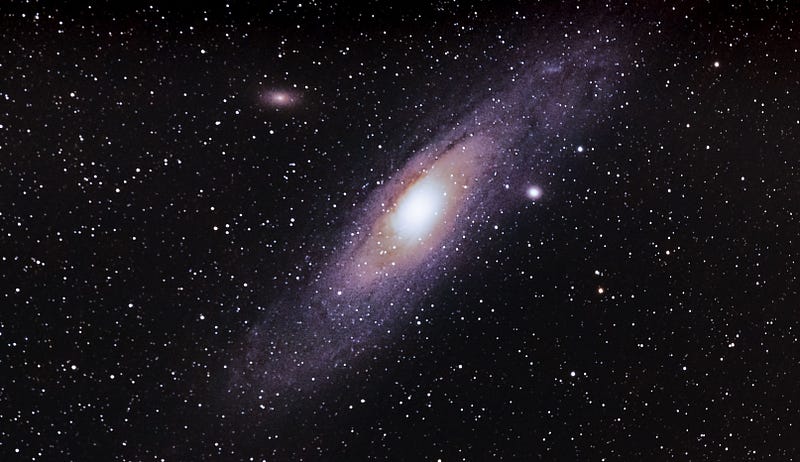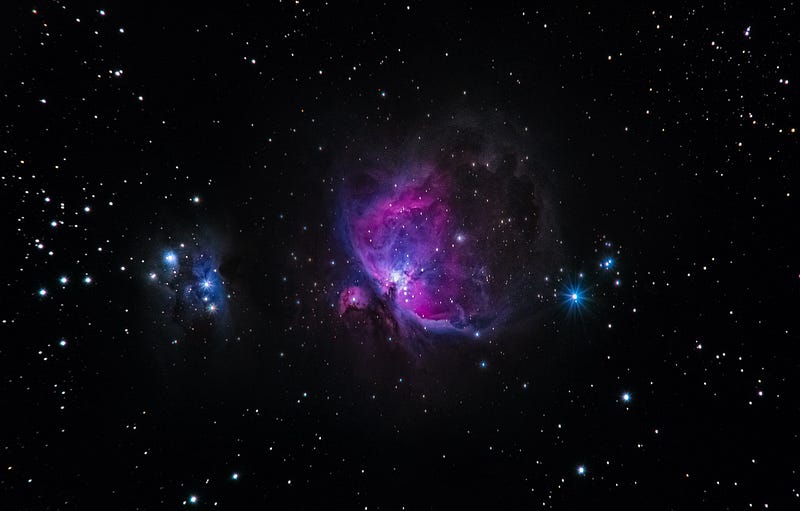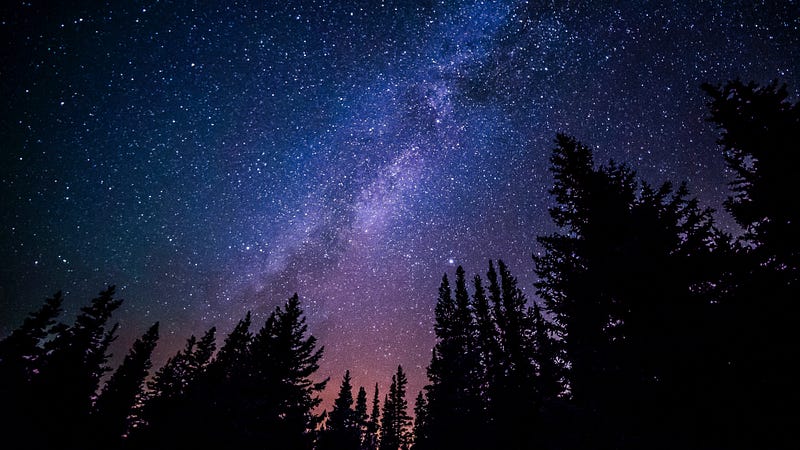Exploring the Vastness of the Universe: Beyond the Milky Way
Written on
Chapter 1: The Immensity of Space
The enormity of space, especially when considering its vast dimensions, is truly astounding. Even narrowing it down to our solar system can be a mind-boggling experience. When we shift our focus to the Milky Way Galaxy, the scale becomes even more remarkable. And then, the realization that there are billions of other galaxies beyond our own adds another layer of complexity that is hard to grasp.
This vastness naturally sparks curiosity, prompting many to explore what else exists beyond our familiar galaxy. In this article, I will share some intriguing findings about several other galaxies that populate our universe.
Section 1.1: A Galactic Encounter with Andromeda
One of the most significant galaxies in proximity to ours is Andromeda. Currently located approximately two and a half million light-years away, it is expected to collide with the Milky Way in a few billion years. While this prospect might seem alarming, there’s no need for concern. NASA assures us that this event will not lead to destruction but will result in the formation of a new galaxy, with our solar system likely emerging intact.

Section 1.2: The Canis Major Dwarf Galaxy's Journey
The Canis Major Dwarf Galaxy, believed to be the closest galaxy to our own, is situated just twenty-five thousand light-years from the Sun. This proximity is remarkable, especially since it remained undetected until 2003 due to the obscuring dust and gas of the Milky Way.
Like Andromeda, the Canis Major Dwarf Galaxy is on a gradual collision course with our galaxy, although on a much smaller scale. It comprises only about one percent of the Milky Way's size. The gravitational influence of the Milky Way has already begun to draw in this dwarf galaxy, resulting in the formation of the Monoceros Ring—a trail of its stars, gas, and dust that has encircled the Milky Way three times.

Chapter 2: Clusters and Superclusters
The Milky Way is part of a collection known as the Local Group, which consists of about thirty galaxies. In contrast, the Virgo Cluster, located around fifty million light-years from us, houses approximately two thousand galaxies, making it significantly larger than our local group.
The categorization of galaxies extends beyond simple groups; clusters of galaxies can be organized into superclusters. The Virgo Supercluster, which includes both the Milky Way and Andromeda, serves as a prime example of this larger structure.

The first video, "How many galaxies are there in the observable Universe?" offers a deep dive into the sheer number of galaxies that exist beyond our own.
The second video, "Beyond the Milky Way: What secrets does the Galactic Local Group really hide?" explores the mysteries surrounding our galactic neighborhood.
Conclusion
In this article, we explored three fascinating topics: a neighboring galaxy that shares a collision course with us, a dwarf galaxy gradually merging with the Milky Way, and a vast cluster that dwarfs our own Local Group. Each of these subjects illustrates the immense scale of our universe and highlights the unique characteristics of various galaxies. I hope you found something new in this exploration! Your thoughts and comments on this topic are welcome!